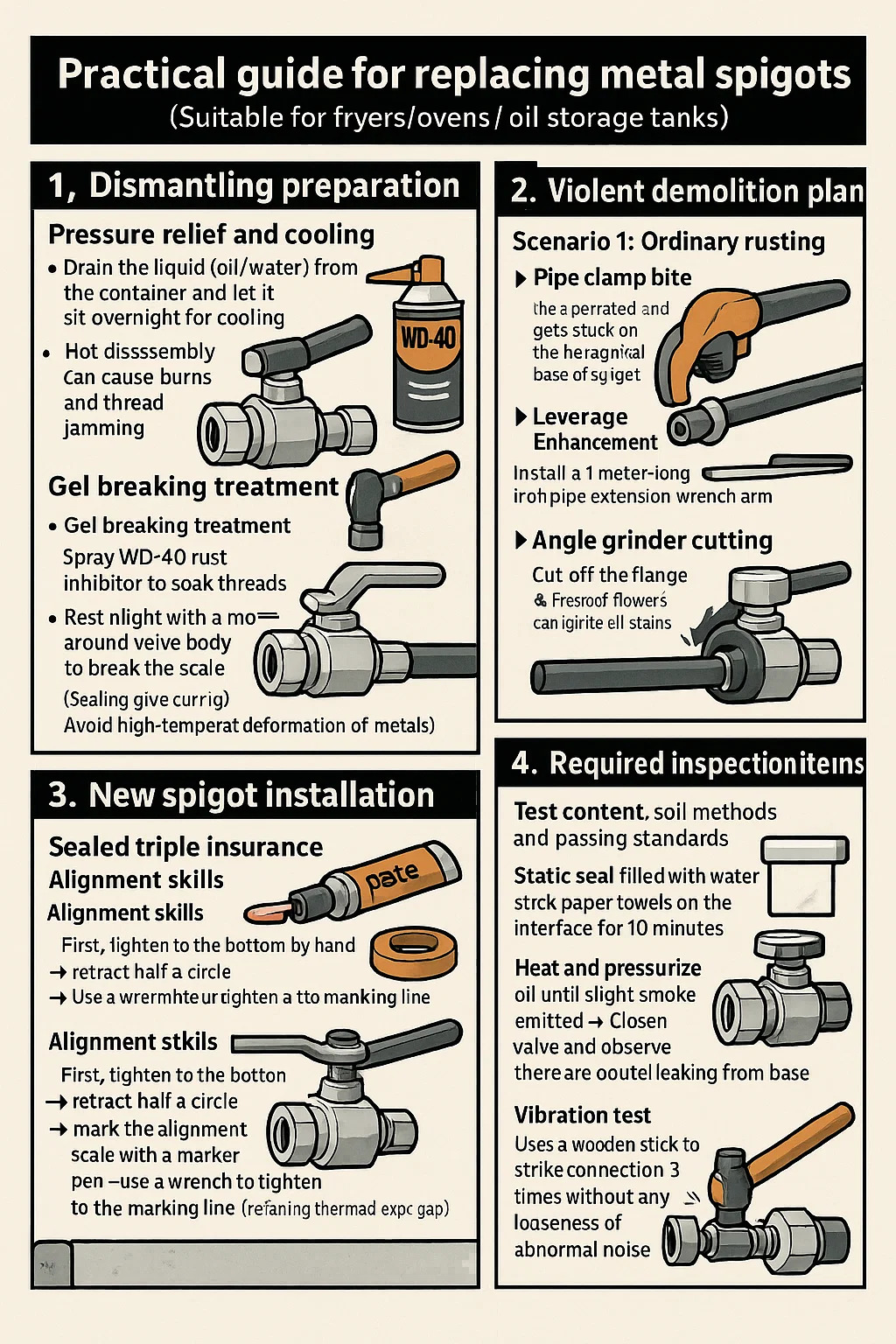Practical guide for replacing metal spigots
(Suitable for fryers/ovens/oil storage tanks)
1、 Dismantling preparation
Pressure relief and cooling
Drain the liquid (oil/water) from the container and let it sit overnight for cooling - hot disassembly can cause burns and thread jamming
Gel breaking treatment
Rusty spigot: Spray WD-40 rust inhibitor to soak the threads, tap lightly with a hammer around the valve body to break the scale
Sealing glue curing: Use a hot air gun to bake the glue at low temperatures until it softens (avoid high-temperature deformation of metals)
2、 Violent demolition plan
▶ Scenario 1: Ordinary rusting
Pipe clamp bite: The serrated end gets stuck on the hexagonal base of the spigot, and it rotates slowly counterclockwise (sudden force will break the joint)
Leverage Enhancement: Install a 1-meter-long iron pipe extension wrench arm
▶ Scenario 2: Thread Sliding Teeth
Chisel disassembly: Cut a deep groove along the installation base → Use a screwdriver to press against it → Hammer to crack the base
Angle grinder cutting: Cut off the flange (note that fireproof flowers can ignite oil stains)
3、 New spigot installation
Sealed triple insurance
Thread wrapped with light pink high-temperature sealing tape (3 and a half turns, reverse thread direction)
Copper based anti bite paste (anti high temperature sticking)
Add copper gasket (more resistant to oil corrosion than rubber)
Alignment skills
First, tighten to the bottom by hand → retract half a circle → mark the alignment scale with a marker pen → use a wrench to tighten to the marking line (retaining the thermal expansion gap)
4、 Required inspection items
| Test Type | Field Method | Pass/Fail Criteria |
| Static Seal Test | Press tissue paper against joints | Pass: Zero moisture after 10 mins |
| Hot Pressure Test | Heat oil until wisping smoke → shut valve | Pass: No oil droplets at base |
| Vibration Test | Strike connected area 3x with wooden mallet | Pass: No rattling/loosening |
| Thermal Cycling | Heat to 350°F → cool naturally → repeat | Fail: Visible micro-cracks around threads |



 English
English русский
русский 日本語
日本語 عربى
عربى Español
Español











